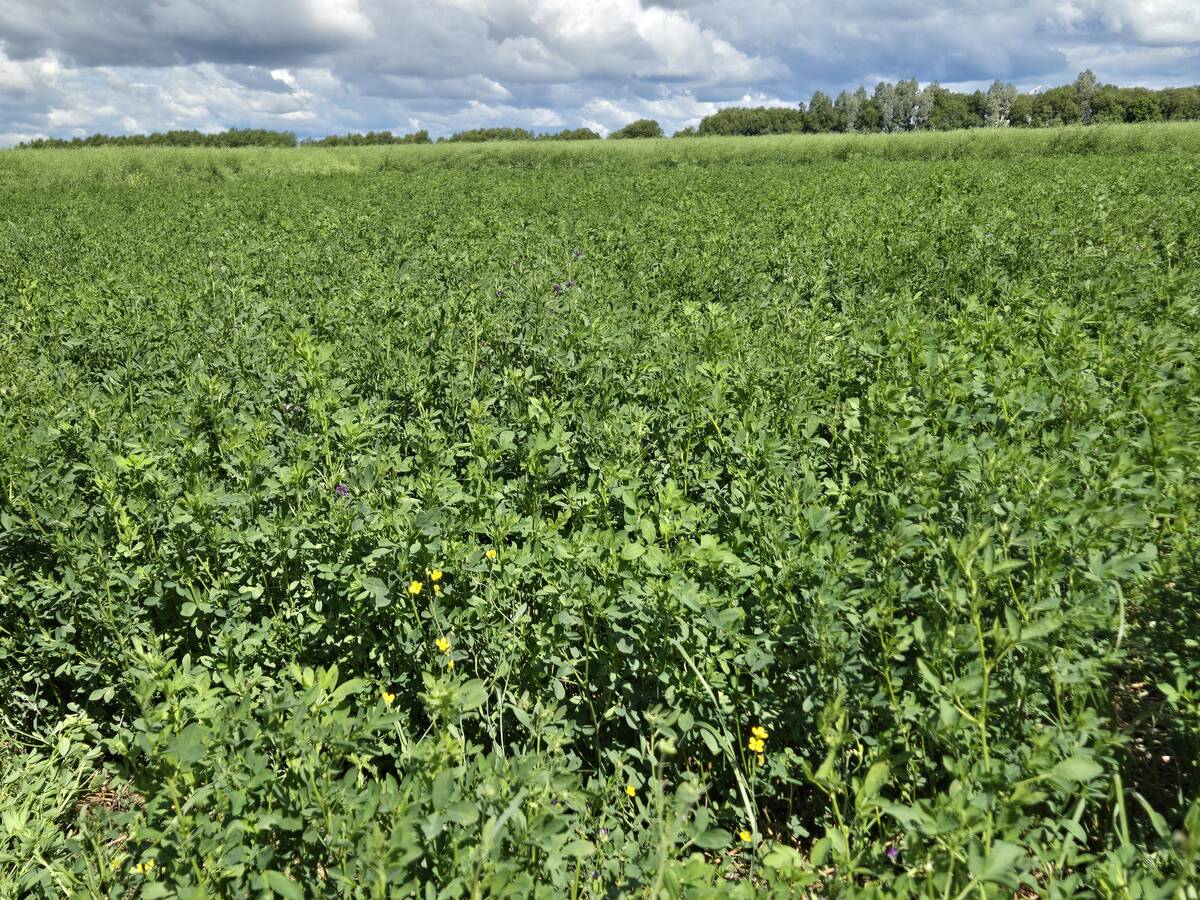A top priority for Saskatchewan Pulse Growers this year is to explore the potential of soybean production in the province.
“It is one area that we’re very interested in and see a lot of potential for growth,” said executive director Carl Potts.
The crop provides growers with solid economic returns, consistent international market demand and an attractive alternative to add to the rotation to break some of the disease and weed pressure that is reducing yields in traditional crops.
Statistics Canada doesn’t track soybean acres in Saskatchewan, but Kevin Elmy, co-owner of Friendly Acres Seed Farm in Saltcoats, Sask., estimates the province’s farmers planted 75,000 to 100,000 acres last year.
Read Also

Manitoba Parkland research station grapples with dry year
Drought conditions in northwestern Manitoba have forced researchers at the Parkland Crop Diversification Foundation to terminate some projects and reseed others.
Elmy predicts that farmers will plant 250,000 acres of soybeans this year and that there will be two to three million acres of the crop within the next five to 10 years. That would rival the amount of peas or lentils seeded annually in Saskatchewan.
He attributes the northwest movement of the crop into Saskatchewan to the discovery of daylight sensitive varieties, where hours of sunshine are more important than heat units.
Elmy said farmers who have grown soybeans won’t go back to peas and lentils. “These things are so easy to manage. There are no big disease controls and weed control is easy,” he said.
Potts said soybeans fall under the pulse umbrella based on regulations established under the Saskatchewan Agri-Food Council decades ago.
The association is hiring a consultant to conduct an economic analysis of the crop’s potential in the province.
That report, which is expected to be finished in early 2013, will help guide the work of a soybean team comprising growers and experts in the areas of agronomy and economics.
The team will be tasked with devising a strategy on how to best spend grower levy dollars in an effort to boost Saskatchewan soybean production.
Elmy thinks he already knows the answer: spend money screening varieties suitable for Saskatchewan’s climate, fine-tuning agronomic recommendations and encouraging the development of a soybean processing sector. He knows of only one processor in the province — O & T Farms in Regina.
Potts also has a hunch what the team will recommend.
“My gut feeling is that agronomic research will be an important element of where we’d likely look to invest going forward,” he said.
The vast majority of pulse check-off revenue has been spent funding breeding programs at the University of Saskatchewan’s Crop Development Centre, but that might not be the appropriate model for soybeans.
“Soybeans are a huge crop globally. There’s a lot of investment in genetics already, which is different than lentils and peas,” said Potts.
There wouldn’t be much need to invest in a breeding program if the strategy determines that Saskatchewan should grow commodity beans for the crushing industry, like they do in Manitoba.
However, breeding could be a spending priority if the strategy calls for growing non-genetically modified beans for human consumption markets, as is the case in some parts of Ontario.
Elmy is convinced growing for the crushing industry is the way to go. He said the demand for high protein feed is strong and growing because of the expanding middle class in India and China.
He has been growing soybeans in eastern Saskatchewan for 11 years and has agronomy tips for growers considering planting the crop this year.
Variety selection is critical. Elmy worries that many growers were fooled into thinking the early-maturing varieties they planted in 2012 will work every year.
That may not be the case because many areas of the province received way more corn heat units than normal last year, which could be skewing the results. He believes farmers should be growing daylight sensitive varieties.
Applying liberal amounts of good quality inoculant is another important agronomic practice.
“If they think they’re putting on enough, add more,” said Elmy.
Other tips include seeding later rather than earlier and rolling the soil.
Potts said the soybean strategy will be in place before the close of SPG’s fiscal year at the end of August so that it can create a research and development budget for the project for 2013-14.

















